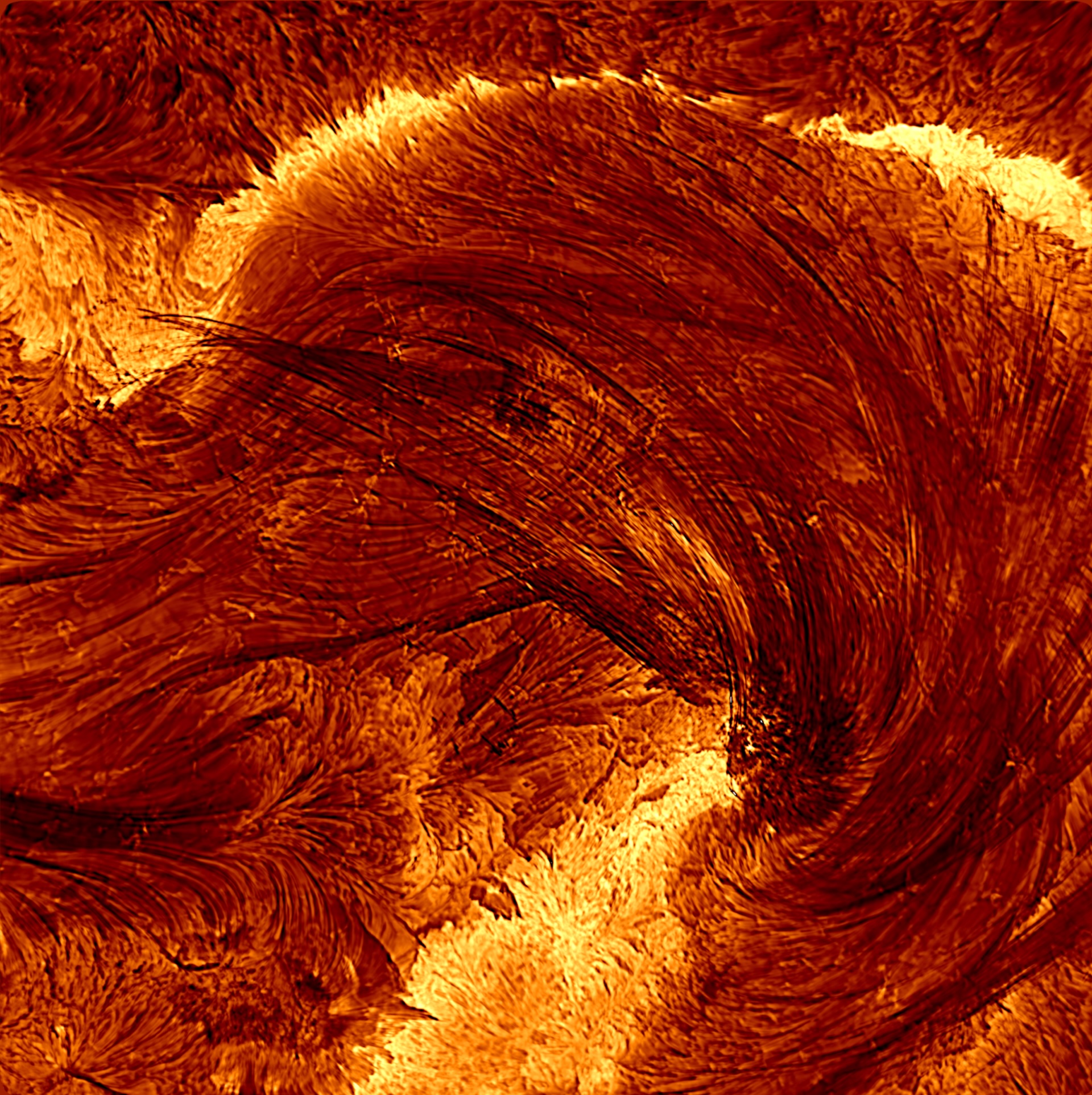Scientists unveil most detailed photo of a solar flare ever taken
Record-breaking images from the world's largest solar telescope, the Daniel K. Inouye Solar Telescope in Hawaii, reveal a solar flare in unprecedented detail.

The world's largest solar telescope just captured the highest-resolution images of a solar flare to date — and they're spectacular.
Researchers trained the Hawaii-based Daniel K. Inouye Solar Telescope on the final stages of a powerful X-class solar flare on Aug. 8, 2024, capturing detailed images of chaotic loops of plasma at the sun's surface. The observations could help scientists understand the mechanics of solar flares and improve predictions of future flares.
"This is the first time the Inouye Solar Telescope has ever observed an X-class flare," study coauthor Cole Tamburri, a solar physicist at the University of Colorado Boulder, said in a statement. "These flares are among the most energetic events our star produces, and we were fortunate to catch this one under perfect observing conditions."
Solar flares are massive bursts of light emitted by the sun during solar storms. Twisting magnetic fields create large, bundled loops of plasma called arcades that extend into the corona — the hot, outermost layer of the sun's atmosphere. When the magnetic fields get so convoluted that they snap back into place (a phenomenon called magnetic reconnection), the sun blasts particles and energy in the form of solar flares into space. When aimed at Earth, energy from the flares can disrupt radio communications and spacecraft orbiting our planet.
Related: Bottom of the sun becomes visible to humans for the first time in history (photos)
But scientists don't know the size of the plasma loops that make up these arcades. Previous observations of the individual loops have been limited by the resolutions of older solar telescopes.
In a new study, published Aug. 25 in The Astrophysical Journal Letters, Tamburri and his colleagues collected high-resolution images of plasma loops in the last stages of a powerful solar flare using the Inouye's Visible Broadband Imager instrument. On average, the plasma loops spanned about 30 miles (48 kilometers) wide. But some were smaller, down to about 13 miles (21 km), which is about as small as the telescope can resolve.
Get the world’s most fascinating discoveries delivered straight to your inbox.
"We're finally peering into the spatial scales we've been speculating about for years," Tamburri said in the statement. "This opens the door to studying not just their size, but their shapes, their evolution, and even the scales where magnetic reconnection — the engine behind flares — occurs."
According to the researchers, it's possible that the coronal loops observed here might be the building blocks of larger solar arcades. "If that's the case, we're not just resolving bundles of loops; we're resolving individual loops for the first time," Tamburri said in the statement. "It's like going from seeing a forest to suddenly seeing every single tree."
The new data on coronal loops could help scientists improve models of solar flares and better understand the magnetic field in the corona, the researchers wrote in the study.
"It's a landmark moment in solar science," Tamburri said. "We're finally seeing the sun at the scales it works on."

Skyler Ware is a freelance science journalist covering chemistry, biology, paleontology and Earth science. She was a 2023 AAAS Mass Media Science and Engineering Fellow at Science News. Her work has also appeared in Science News Explores, ZME Science and Chembites, among others. Skyler has a Ph.D. in chemistry from Caltech.
You must confirm your public display name before commenting
Please logout and then login again, you will then be prompted to enter your display name.
